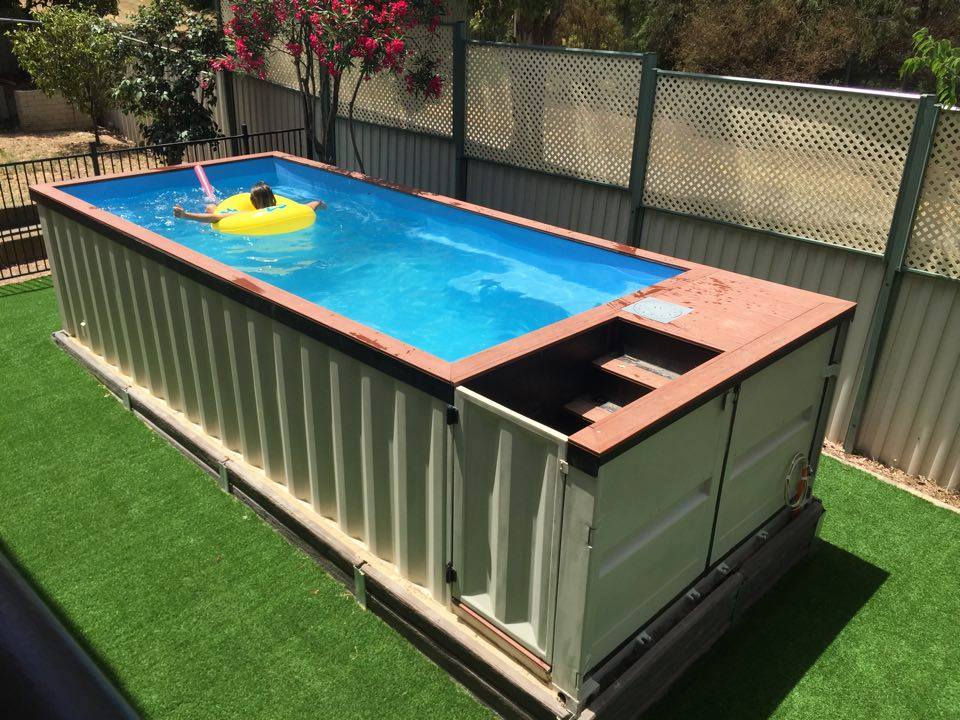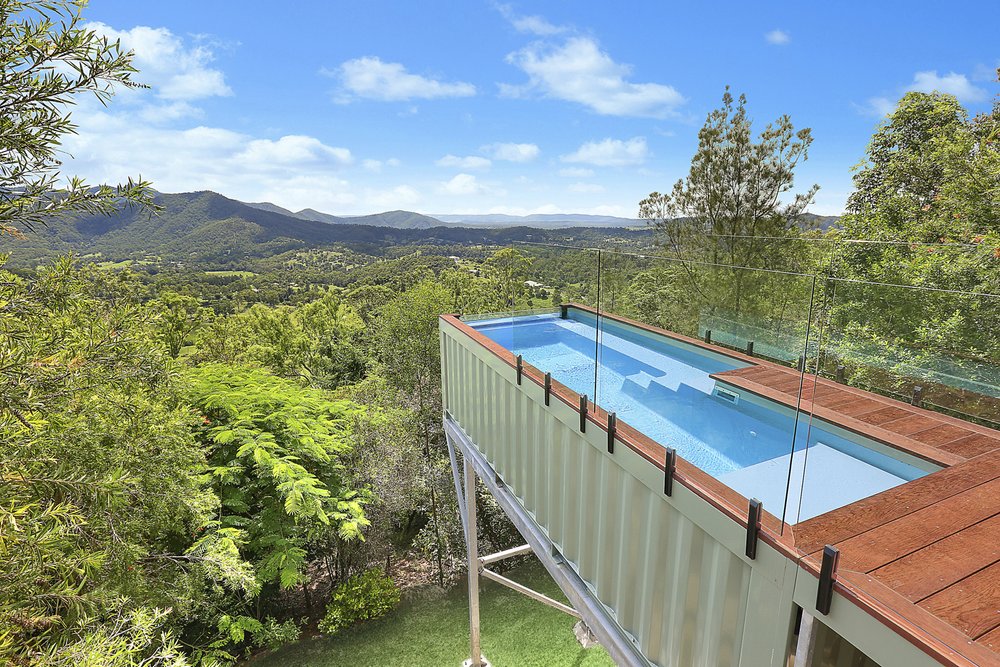Good Job!
Thanks for taking the time to let me know about your needs.
I look forward to helping you find your new home.
The Block’s Sticks and Wombat have given their garden an edge this week with a small space swimming pool that didn’t break the bank.
The innovative pair opted for a shipping container swimming pool design, saving both time and money. At around 2.4m in height and width, and anywhere from 6-12m in length, a converted shipping container can be an easy solution if you’re looking for a portable, low-cost swimming pool design that will fit into almost any backyard in Melbourne and beyond. Container pools (like converted shipping container home offices, bars and pop-up stores) are hot right now, providing raw style and industrial edge.
Container swimming pools are just one option, however, with other small-space solutions available including freeform pools (which can be made to fit a variety of spaces), courtyard-sized pools, plunge pools and swim spas. Above and semi-ground pools are another traditional, affordable option for Australian homes.
Container swimming pools may seem an easy and attractive choice in comparison to in-ground pools, but careful consideration should still be given before installing one. Planning permission, soundness of structure, design, depth, water-tightness and plumbing are just some considerations. Consider whether any landscaping of your backyard will be required to accommodate a pool and make yourself aware of whether shipping container pools need a fence in your local council area. Contact a specialist such as Shipping Container Pools and your local council for advice.
Sticks and Wombat’s auctioneer Daniel D’Assisi says swimming pools can be a great selling point for homes depending on the category of your property. “If you think that your property will attract a family category buyer that will use this feature for years to come, the addition of a swimming pool can be a great influencing factor in assisting you to achieve a great sale result,” he says.
Demand for properties with pools has remained strong over time, even as land block sizes have shrunk. When buyers are considering similar properties (as on The Block), the addition of a pool can have significant impact. The value a pool adds to a home varies, however, with more value added to family properties in the suburbs.
“It is important to be aware of properties that are more suited to a purchaser looking for a low maintenance living option,” advises Daniel, “as a swimming pool may present the reverse effect for the potential new homeowner. We would always recommend calling in your local Noel Jones agent to discuss any major works for your property prior to making such a substantial investment.”
One distinct advantage of shipping container swimming pools is the ease of removal in comparison with an in-ground alternative.
With Sticks and Wombat’s backyard being one of three properties with a pool on The Block this year, it will be interesting to see how the auctions play out.

Image from Shipping Container Pools
Here are a few questions answered to help you gain a better picture of whether shipping container pools are right for your Melbourne property.
In efforts of protecting young children from drowning in unsupervised swimming pools and spas, there is a range of laws and regulations across Australia mandating safety barriers.
But these laws are often in relation to the more common, in-ground pools, which begs the question, ‘do shipping container pools need a fence?’
Well, by up-cycling a shipping container into a swimming pool, a child-proof fence may no longer be necessary. Each pool can instead hold a child-safety door, which can still prove compliant with many regulations put forward by local councils. This allows property owners to design a more open, free-flowing outdoor area to enjoy, while still meeting their safety obligations, as well as protecting the lives of small children in the area. Still, as each state and territory holds different views on fencing laws, it is important to check you are meeting all requirements from your local council when applying for initial approval.
Shipping container pool designs are known for their flexibility and versatility. In terms of how deep they can be, that really depends on the preferences of the purchaser. You will find most range from 1.0m to 1.3m, however, they prove incredibly simple to modify, leaving you with a wealth of options to suit your needs.
Naturally, the costs relating to any project at your Melbourne property will depend on the scope of work involved, and shipping container swimming pools are no different. Should you be looking for more cost-effective ways to introduce a swimming pool design to your property, however, then you may be pleasantly surprised with the potential savings of shipping container pools in Melbourne.
The average Australian property owner looking to install an in-ground swimming pool will be looking at investing $50,000 or more, not to mention the additional costs of maintenance and the surrounding landscaping. Re-using a shipping container, however, requires far less labour, materials, and time, reducing the average price down to only $20,000 to $30,000 for high-quality options. These savings can be reinvested back into your wider property for further exciting developments!

Image from Shipping Container Pools
There are a few options when it comes to lining a shipping container pool. The most common and least expensive option is PVC liner. This is reinforced with a fabric backing, making it easy to work with every design and can even be installed without professional help (although it is recommended). PVC liners typically last between 5 and 10 years before they need to be replaced.
Another option for lining a shipping container pool is fibreglass. Fibreglass is more durable than PVC and can last up to 20 years with proper care. However, it is also more expensive and will require professional installation.
The final option for lining a shipping container pool is concrete. Concrete is the most durable option and can last indefinitely with proper care. Again, it is also the most expensive, given not only the professional assistance, but the added scope of work and materials.
Which option you choose for lining your shipping container swimming pools will depend on your design, budget and how long you plan to keep the pool. PVC liner is a good option for those on a tight budget or who only plan to keep the pool for a few years. Fibreglass is a better choice for those who want a longer-lasting pool, but it comes at a higher price tag. Concrete is the best choice for those who want an indefinite lifespan for their pool, and are willing to outlay the expense early on.
No matter which option you choose, be sure to follow the manufacturer’s instructions for installation and care. This will help you get the most out of your shipping container pool for years to come.
Interested to learn how the swimming pool design impacts the value of your property? Looking to purchase a Melbourne home with a pool already installed? Contact us at Noel Jones today for more information.